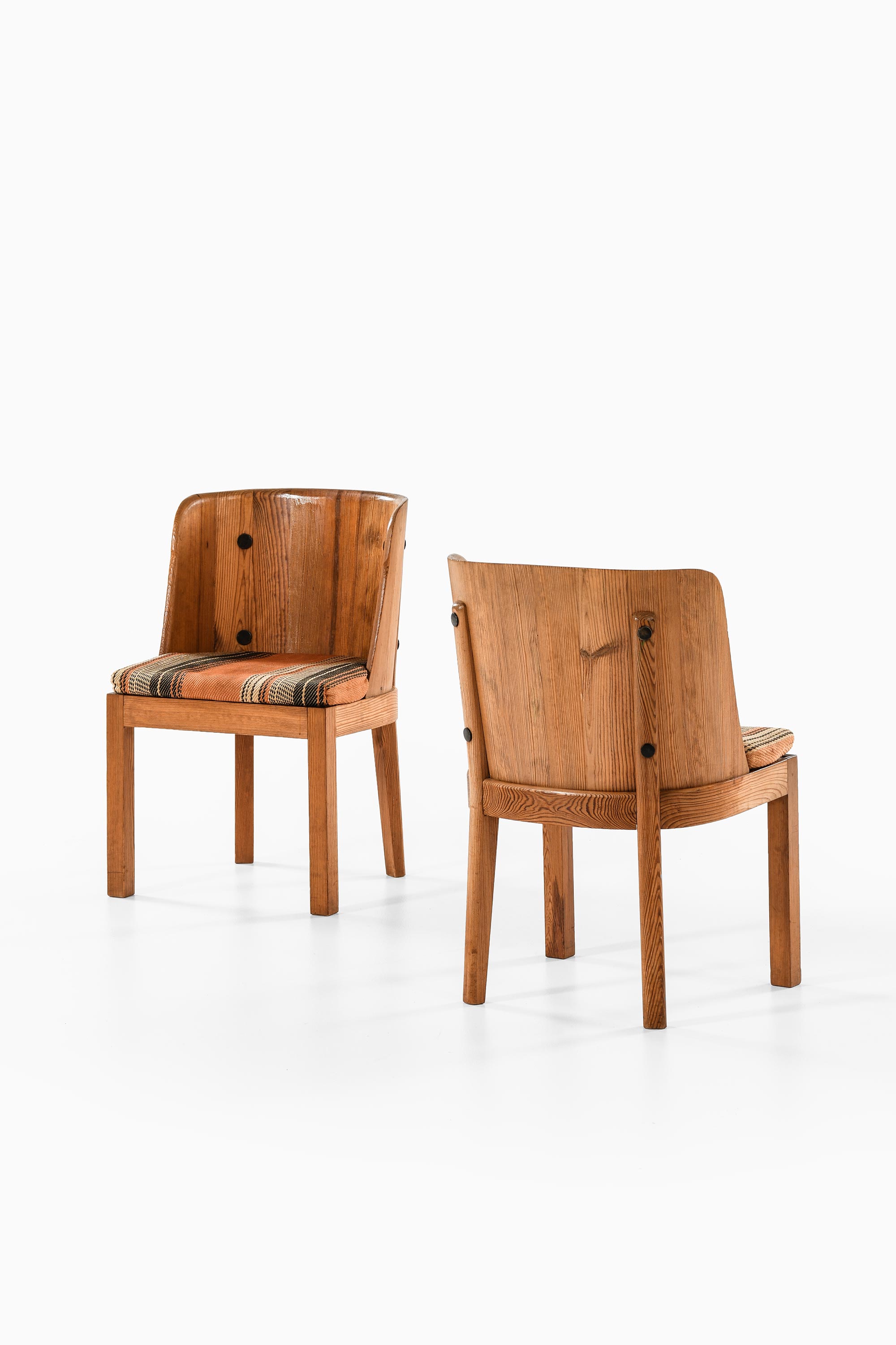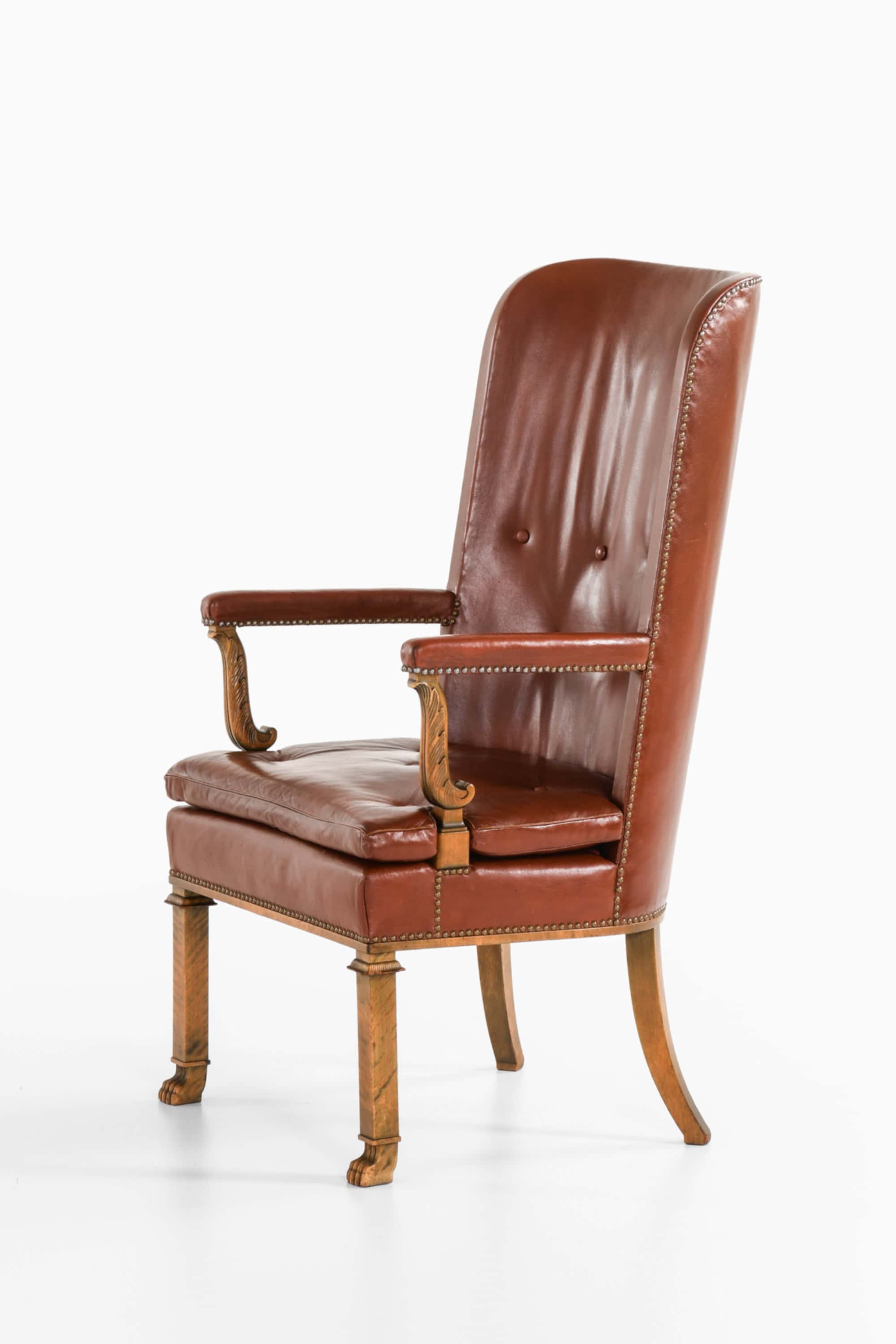Armchair
This armchair, attributed to Axel Einar Hjorth and produced by Bodafors in Sweden during the 1930s, represents a refined confluence of Swedish Grace and early functionalist aesthetics. Constructed from birch, the frame features a lustrous warm patina, developed over time, that enhances the wood’s natural grain and reveals the chair’s age and craftsmanship. The material choice and workmanship reflect the high standards of production associated with Bodafors and the decorative sophistication often present in Hjorth’s attributed designs.
The chair’s design is composed and architectonic. The backrest is adorned with vertical fluting that converges into a circular medallion motif—an ornamental detail framed within a rectangular outline that imparts a neoclassical clarity to the form. This restrained yet elegant embellishment is a hallmark of the Swedish Grace style, where classical inspiration is tempered by modern restraint. The armrests are supported by turned spindles, introducing a sculptural rhythm that balances the geometry of the seat and back.
The seat has been reupholstered in horsehair fabric, a traditional and durable textile known for its refined texture and resilience. Its dark tone contrasts with the honeyed tones of the birch, adding a subdued richness to the otherwise light palette. The upholstery treatment is minimal and precise, preserving the formality and elegance of the original design.
The chair stands on tapered, fluted legs—each echoing the linear vocabulary of the backrest fluting—further anchoring the piece in neoclassical tradition while aligning with the emerging sensibilities of functionalist design. These legs contribute a visual lift and balance, ensuring the chair maintains a light and poised stance despite its solid construction.
Measuring 58.5 cm in width, 60 cm in depth, and 95 cm in height, with a seat height of 45 cm (23 x 23.6 x 37.4 inches; seat height 17.7 inches), the chair is proportioned for both aesthetic presence and ergonomic comfort. Its structure and decoration place it at the intersection of early 20th-century Swedish decorative traditions and the emerging modernist vocabulary that would define Hjorth’s later Sportstugemöbler series.
The surface shows minor signs of wear consistent with age, contributing to the chair’s authenticity and reinforcing its value as a collectible piece. As an attributed work, it stands as a refined example of Hjorth’s early career and of Bodafors’ high-quality production during the interwar period—characterized by classical influence, impeccable craftsmanship, and a forward-looking sense of form.
Dimensions (cm) | W: 58.5 / D: 60 / H: 95 / Seat H: 45 |
| Producer | Bodafors möbelfabrik |
| Color | Black |
| Decade | 1930s |
| Country | Sweden |
| Style | Neoclassical, Scandinavian Modern, Swedish Grace |
| Material | Birch, Horsehair |
| Designed in | 1930s |
| Item Number | 154773 |
Axel Einar Hjorth
Axel Einar Hjorth (1888–1959) was a Swedish furniture designer and architect whose stylistic range and prolific output made him one of the most versatile and dynamic figures in early 20th-century Scandinavian design. Best known for his luxurious...
Read more










